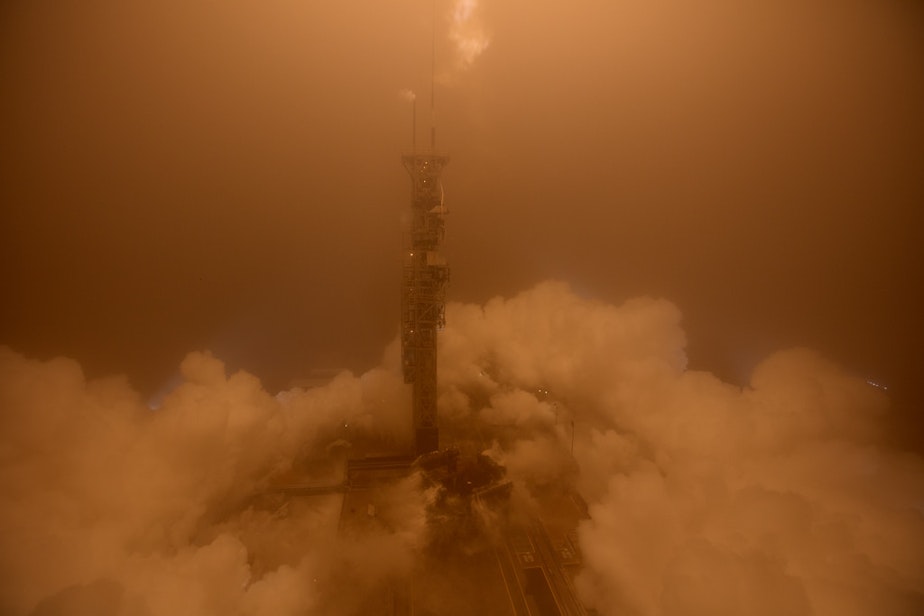'Seven minutes of terror' to Mars brought to you by Seattle-area engineers

It played out like a movie: A monotone countdown in a tense room culminating in a triumphant cheer.
On Monday, NASA’s InSight successfully touched down on the surface of Mars. The mission launched six months ago in California, but it was a facility in Redmond, Washington, that made it take off.
The team at Aerojet Rocketdyne has been watching the progress of the mission anxiously since the launch vehicle sent the spacecraft on its way, through its long flight from Earth to Mars, and then in the final, terrifying moments as the craft approached the surface of the red planet.
This time is called the “seven minutes of terror” – when the spacecraft enters Mars’ atmosphere and a ton of small steps and events have to go 100 percent correctly in order to have a successful touchdown.
Bill Radke interviews Aerojet Rocketdyne's Fred Wilson
Sponsored
“It’s an incredibly dynamic time. And for us, that seven minutes of terror – we’re the last part of it. So we have to hang in there through all the anxious moments all the way up until that final announcement,” said Fred Wilson, director of business development at Aerojet Rocketdyne, speaking on KUOW’s The Record.
The company, which was started over 50 years ago by engineers from Boeing and the Jet Propulsion Lab, built the engines and thrusters that sent InSight to Mars. Wilson said the Redmond facility produces 500-600 engines a year and is the “center of excellence within the country for spacecraft propulsion.”
Now that InSight is on the ground, the company’s role in the mission is done, but Wilson said the real payoff is when the scientific data starts coming back. InSight, short for Interior Exploration using Seismic Investigations, Geodesy and Heat Transports, is tasked with studying how planets form by probing into Mars.
It’s possible that humans may make their way up to Mars at some point. NASA has said it would like to send people up by 2030.
“Personally, in my 20s or 30s I would have jumped at going to Mars. Now in my 50s, I’m not sure I would jump on it. But I do think it’s a great thing for humankind to go to Mars and we should definitely do it,” Wilson said.
Produced for the web by Kara McDermott.




